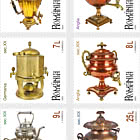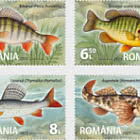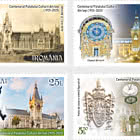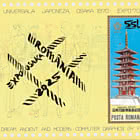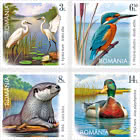History Of Danube Navigation
Romfilatelia introduces into circulation on Tuesday, June 24th this year, the postage stamp issue History of Danube Navigation. Comprising two postage stamps and a First Day Cover, the issue is dedicated to an important historical event: the establishment in 1856 of the European Commission of the Danube (the first entity that later gave rise to the concept of the European Union), along with the bicentenary of the birth of the man also known as the ‘Father of the Danube’, the British engineer Charles Augustus Hartley.
The Danube, the second-longest river in Europe after the Volga, springs from the Black Forest Mountains in Germany and flows for 2,852 km through ten countries before emptying into the Black Sea. For centuries, the navigable section of the Danube in southern Romania was under the control of the Ottoman Empire. After Dobruja was united with Romanian territory (in 1877), interest in Danube navigation became increasingly evident, especially due to the establishment of the European Commission of the Danube by the Treaty of Paris (1856), signed by the great powers of the time: Prussia, Great Britain, France, Italy and Sardinia, Austria, Russia, and Turkey.
To meet the demands of the extensive programme to modernise navigation conditions, an exceptional specialist Charles Augustus Hartley was appointed as Chief Engineer of the Executive Committee of the European Commission of the Danube, a position he held for 15 years in Galați and Sulina.
Considered the greatest hydrotechnical engineer in Europe, Charles Hartley was involved in the largest project to modernise Danube navigation, developing solutions and implementation methods whose benefits are still measurable today.
The implementation of signalling and buoyage on the maritime Danube, the regulation of the Sulina maritime canal through dredging of the Sulina branch, the correction of the river’s meanders, and the systematisation of the town of Sulina are some of the tangible outcomes of the solutions developed by the hydrotechnical engineer, with visible economic consequences.
The European Commission of the Danube initially had its headquarters in Sulina, inaugurated in 1868, followed by a second headquarters in the Palace built in Galați between 1893 and 1896. This building was severely damaged during the First World War and rebuilt between 1922 and 1923. Currently housing the ‘V.A. Urechia’ County Library, the historical monument was awarded the prestigious ‘European Heritage Label’ in 2022, and the building was recently restored by the Galați County Council.
The European Commission of the Danube operated until 1948, when a new structure was established under the name of the Danube Commission, comprising representatives from eleven countries: Bulgaria, Czechoslovakia, Yugoslavia, Romania, Hungary, Russia, Ukraine, Austria, Croatia, Germany, and the Republic of Moldova.
The postage stamp (with the face value of Lei 5) depicts, against the background of an early 19th-century engraving illustrating the city of Galați, the Palace of the European Commission of the Danube in Galați, built between 1893 and 1896 and reconstructed between 1922 and 1923, which today houses the ‘V.A. Urechia’ County Library.
The postage stamp (with the face value of Lei 14) features a portrait of Charles Augustus Hartley alongside the architectural façade of the first headquarters of the European Commission of the Danube, built in Sulina in 1869.
The First Day Cover features a photographic document showing the members of the European Commission of the Danube, signatories of the Treaty of Paris of 1856, set against the background of a map of the Danube Delta, used for the work plan approved by the Executive Committee of the ECD.
By accessing the QR code on the minisheets of stamps, you will discover the story of the issue History of Danube Navigation.
Romfilatelia thanks the representatives of the ‘V.A. Urechia’ County Library of Galați and the Galați County Office of the National Archives for the documentary support to the development of this postage stamps issue.
Romania - Recommended stamp issues
WOPA+ recommended stamp issues
| Music Giants VII - Iron Maiden |
| Issued: 12.01.2023 |
| ›Great Britain |
| Effigy of H.S.H Prince Albert II - Green Letter Rate |
| Issued: 03.01.2023 |
| ›Monaco |
| Year of the Rabbit |
| Issued: 05.01.2023 |
| ›Guernsey |
| Dimitrie Cantemir, 350th Anniversary of his Birth |
| Issued: 16.01.2023 |
| ›Romania |
| Medicinal Plants |
| Issued: 03.01.2023 |
| ›Romania |
| Honour Guard of the President of the Slovak Republic |
| Issued: 02.01.2023 |
| ›Slovakia |
| Veteran Tractors |
| Issued: 04.01.2023 |
| ›Aland Islands |
| St. Elizabeth’s Church in Parnu |
| Issued: 06.01.2023 |
| ›Estonia |
































